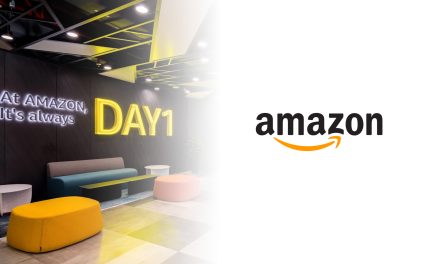Nikhil Jain, the Director of Insights & Data Solutions for Dailymotion Advertising, shares his expert insights about the importance of the attention economy in business marketing.
Millennials and Gen Zs are the biggest consumer groups, but brands face unique marketing challenges because of their short attention span. Dailymotion conducted a recent study about considering attention metrics as a critical factor that advertisers and markets must pay attention to.
Attention Metrics measure how well an advertisement, website, or content captures and retains the target audience’s attention.
Millennials and Gen Zs are key stakeholders in the Attention Economy, so brands must develop a strategic approach to stand out. But how can brands attain this goal?
In this MartechAsia interview, Nikhil Jain, the Director of Insights & Data Solutions for Dailymotion Advertising, shared his expert insights about the importance of the attention economy in business marketing. Dailymotion is one of the world’s largest video hosting and sharing platforms.
What is the Attention Economy, and why is it important for APAC marketers to understand this phenomenon?
Attention is the ability to focus on something while excluding other distracting stimuli selectively. The Attention Economy is a system where the attention span of a target audience is both the resource and commodity. In this Attention Economy, marketers compete for their audience’s increasingly limited attention – as online content becomes increasingly saturated and immediate.
The proliferation of digital media and the amount of content available has made people highly selective of what they consume. This is crucial for marketers, as audiences themselves are now the gatekeepers of what they consume. For brands to not just survive but thrive, they need to stand out amongst the clutter and their competitors. The more viewers there are collected, the more attention is sold, driving up the price of advertising. Simply put, more attention equals more sales.
APAC marketers have to take this into consideration and develop engaging and attention-grabbing content that resonates with their audiences. The goal is to capture their audience’s attention for as long as possible.
Marketers must generate content that is not just captivating but also relevant and beneficial to their target audience in this climate. They must also be able to monitor and analyse the effectiveness of their content in catching and maintaining their audiences’ attention and alter their techniques as needed.
The Attention Economy has given rise to new advertising models, such as influencer marketing and native advertising, which concentrate on developing genuine connections with audiences rather than just bombarding them with traditional ads. Marketers in APAC must understand these new models and leverage them effectively to resonate with their targeted audiences.

What are Millennials and Gen Zs’ roles in the Attention Economy, and how should APAC marketers tailor their content to suit their needs?
Marketers should emphasize establishing a veritable connection with these audiences. The first step towards this is trying to stay updated with relevant trends and understand the changing consumer behaviours.
In the Attention Economy, Millennials and Gen Zs play an important role as they are the demographics that are the most active and engaged when it comes to social media and digital media usage. These two demographics spend more time on social media applications than the previous generation (Boomers, Gen Xs) that came before them. There are certain quirks and factors of Millennials and Gen Zs marketers should take note of when it comes to their social media habits and behaviours
On average, Millennials have an attention span of 12 seconds, while Gen Zs have only 8 seconds. Both generations are heavy social media users, but there are key differences as well.
Gen Zs are more receptive to influencers compared to Millennials, and they don’t shop online as much compared to their older counterparts. Gen Zs aren’t as loyal to a brand as compared to Millennials; they prefer to keep their option open and value authentic and transparent content/content creators, thereby making it essential for marketers to create authentic and relatable content that resonates with them.
Overall, short-form videos are an effective way to capture the attention of both Millennials and Gen Zs given their shorter attention spans. These generations prefer bite-sized, visually appealing, and interactive content they can consume quickly and easily on their mobile devices. Influencer marketing is also an effective way to reach both Millennials and Gen Zs – especially for the latter.
Fresh and quality content is something that is an evergreen constant for both these age groups. However, different audiences have different tastes. Marketers need to understand their audiences’ interests and centres of attention in order to stay relevant to them.
What are some other factors advertisers/marketers need to consider when reaching out to Millenials/Gen Zs’ in this climate?
Gen Zs are the true digital natives of this generation. Gen Zs’ in particular, have a disposable income worth USD$360 billion in 2021, and are often not afraid to spend their money on their own terms. Similarly, Millennials are also technologically savvy, and like Gen Zs’, they are spending more than their predecessors.
One key factor for these two demographics is that they are socially responsible and care about the people around them. This means that the brands they support or want to purchase from will need to align with their values.
The Gen Z demographic values authenticity. If a brand appears trustworthy and authentic, they most likely will purchase from the brand. The rise of UGC (User-generated content) is a great way for brands to capitalise on, to grab the attention of Gen Zs. This is where content creators/influencers come in. Marketers and advertisers can work together with influencers as Gen Zs will buy from brands and people that they trust.
Additionally, by using language that relates/resonates with Gen Zs will most likely grab their attention as well.
However, it is imperative that brands use the right platforms to connect with their target demographic. The majority of millennials and Gen Zs favour platforms such as TikTok and Instagram hence using these platforms to reach this demographic will be beneficial to marketers and advertisers.
How have Attention Metrics become a means to determine business outcomes, and how can brand marketers leverage this trend?
Attention Metrics are important in determining business outcomes as they allow marketers to measure and analyse user engagement with their content. Attention Metrics also give advertisers more transparency into the value of their advertising/marketing campaign and valuable feedback by providing accurate and detailed insights into how users engage with their content.
Here are the following ways marketers can leverage this trend:
Attention testing using eye-tracking technology
By using advanced technologies like eye-tracking, marketers can gain insights into which elements of their creative ads are attracting the most attention from their target audience. This information can be used to optimize ad elements to better resonate with the audience and improve ad performance.
Attention metrics for ad placements
As ad spaces become increasingly cluttered, it is becoming more challenging to assess the quality of ad placements using traditional media KPIs. Attention metrics offer a valuable solution by providing marketers and advertisers with greater control and visibility over their potential ad placements.
Post-campaign impact analysis
Attention metrics can be used to better understand the impact of a campaign on the engaged audience’s preferences. By analyzing the data gathered through attention metrics, marketers can gain new insights that will help them prepare for future campaigns and optimize messaging, creative elements, and placements to better resonate with the target audience.
Attention metrics are highly relevant in the modern era when Millennials and Gen Zs are key stakeholders. APAC marketers can leverage the insights shared by Nikhil Jain of Dailymotion to create the best marketing campaigns that align with their goals and target audiences.



















